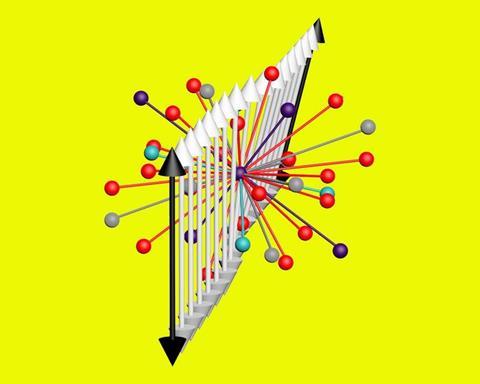
Expectations over optical behaviour that have been widely held since Louis Pasteur’s seminal discoveries in 1848 have been upended by a new study. Researchers observed optical behaviours linked to chirality in crystalline lithium cobalt selenium oxide (Li2Co3(SeO3)4), a centrosymmetric crystal that as such cannot be chiral. ‘Within the inorganic crystal community there’s been a strong sentiment that you cannot have chiroptical effects under centrosymmetry,’ says Roel Tempelaar, a researcher at Northwestern University’s chemistry department who led the new work.
Chirality refers to two versions of a structure – be that light, molecules or crystals – that are almost identical but cannot be superimposed on each other, just like your left and right hand. When a structure displays centrosymmetry it has lines of symmetry in every direction from a central point, ruling out any possibility of chirality.
Chiral materials have a chiroptical response – they rotate linearly polarised light and absorb circularly polarised light differently depending on whether it is left-or right-handed – as a result of the molecule or crystal’s shape. Pasteur was able to explain why artificially synthesised tartaric acid did not rotate linearly polarised light, while that derived from biological processes did, as life only produces one version of the molecule. Where both versions are present in equal measure in artificially synthesised tartaric acid, the chiroptical responses cancel out. As centrosymmetric crystals have no chirality in the first place, no-one expected to see chirality in their optical response at all. However, the researchers showed that centrosymmetric crystalline Li2Co3(SeO3)4 transmits more left circularly polarised light than right.
‘This is a really beautiful study that challenges the boundaries of conventional thinking,’ says Richard Robinson, a materials scientist at Cornell University in the US. ‘This result is sure to open exciting new avenues in chiroptic material design.’
How a centrosymmetric crystal shows chiral behaviour
Although, by definition, a centrosymmetric crystal structure does not meet the criteria for a chiroptical response, it turns out that the interference of two other linear polarisation phenomena also results in different absorption of left- and right-handed circularly polarised light. In fact, while the result came as a surprise, reports date back decades when it comes to chiroptical responses based on interference between linear dichroism – polarisation dependent absorption – and linear birefringence – polarisation dependent refraction.
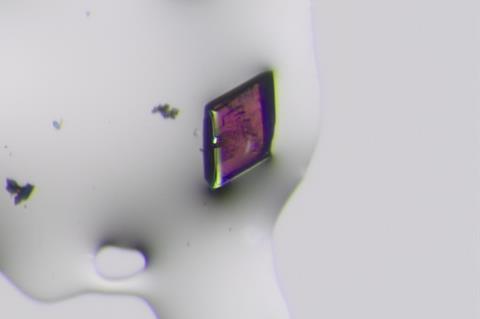
The research community has now come to recognise the effect as a physical mechanism with potentially useful features that differ to the optical activity attributed to chiral molecular or crystal structure. As such it could be exploited for engineering chiral light for quantum information applications, where qubits are encoded in spin states of photons instead of electrons or nuclei. Tempelaar was particularly intrigued by the possibility of exploiting the effect to produce compact chiral lasing. But while there are reports of the effect in organic thin films, metal-halide perovskites and nanostructures, Tempelaar and his team were unable to find any reports of the effect in inorganic crystals, where the prevailing mindset still maintains that chiral crystal structure is a prerequisite for chiroptical responses.
Classy discovery
Being mostly a molecular scientist, Tempelaar was lucky enough to find himself in conversation with a colleague at Northwestern University, Kenneth Poeppelmeier, who has long worked in the realm of inorganic crystals. The two eventually found themselves exploring crystal symmetries theoretically to see in which types of crystal the effect could manifest. ‘To our surprise, we found that it will survive under certain centrosymmetric classes,’ Tempelaar says.
Even so there remained a ‘healthy dose of scepticism’ among the team as they began searching for chiroptical centrosymmetric crystals. A close collaboration between graduate students Katherine Parrish and Andrew Salij, as well as postdoctoral researcher Kendall Kamp, ultimately predicted, synthesised and characterised the candidate crystal Li2Co3(SeO3)4. To their excitement, the measured effect was very large.
‘The magnitude of the effect has significant technological implications,’ says Garth Simpson, who specialises in novel light–matter interactions at Purdue University in the US, but was not involved in this research. He adds that tabulation of crystal classes supporting this effect could be a ‘particularly useful practical guide’ – more so if the table includes all the relevant crystal classes.
Haipeng Lu, whose research at the Hong Kong University of Science and Technology focuses on inorganic functional materials, also notes that the interaction is ‘not new to researchers but has been overlooked for many years’. He says that optoelectronics, photonics, spintronics and quantum information science could all benefit from this discovery. ‘It makes researchers in the field re-think the general idea that only non-centrosymmetric materials can produce circular dichroism.’
Furthermore, Tempelaar is confident the effect is widespread. ‘I don’t think we got particularly lucky – I think this is the tell-tale that there is a whole class of centrosymmetric materials that will be extremely good chiroptical materials,’ he says.
References
K A Parrish et al, Science, 2025, 388, 1194 (DOI: 10.1126/science.adr5478)



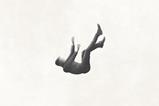
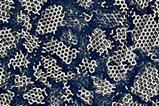
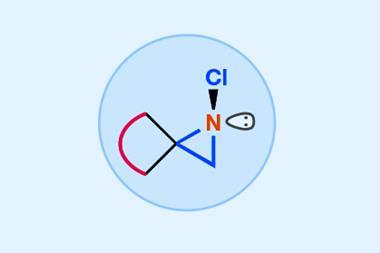


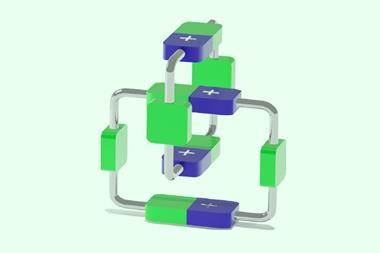
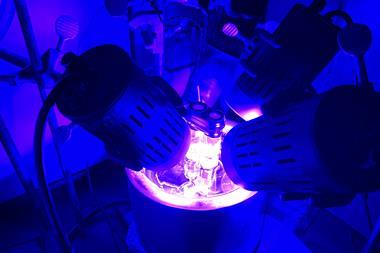
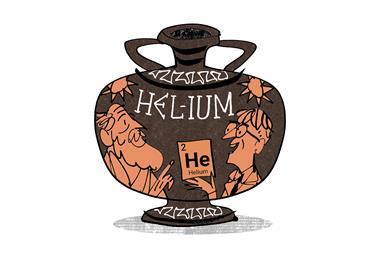
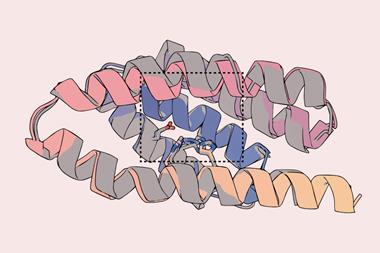

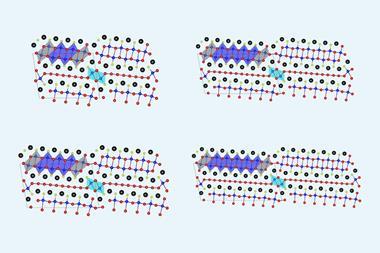
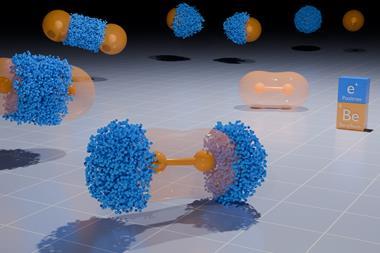
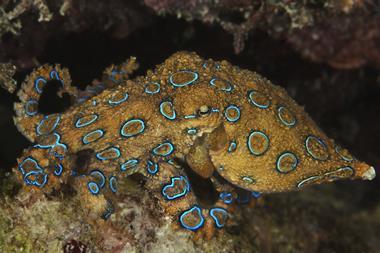
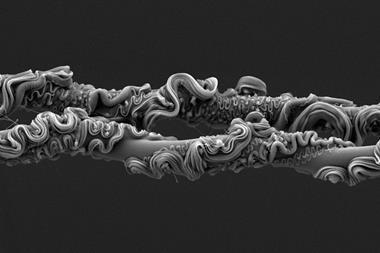
No comments yet